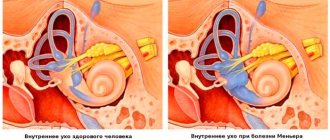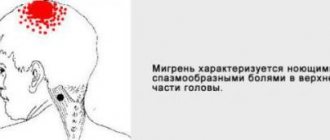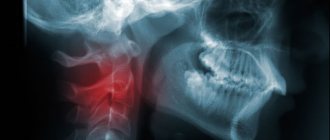The appearance of a lump on the back of the head is a direct indication for a visit to the doctor. The formation is often the result of injury and the formation of a hematoma in the soft tissues. It may also be a tumor, a manifestation of an inflammatory process, or a skin reaction to an irritant. In some cases, the problem not only causes discomfort, but also poses a health hazard. If the lump appears for no apparent reason, gradually increases in size or is very painful, it is better not to hesitate, but to urgently seek help. It is best to avoid taking medications, topical medications, or physical therapy until a diagnosis is made.
Causes of lumps
Bumps appear on the head not only after blows. Experts identify dozens of reasons for the formation of conglomerates of various sizes, consistency, and appearance. Their occipital localization deserves special attention due to the abundance of blood vessels and nerve endings in the area and the increased risk of injury to the area.
The main reasons for the appearance of bumps on the back of the head:
- a skin reaction is the result of an insect bite or the use of inappropriate hair cosmetics. It can be a small bump or a large swelling, which depends on the cause and the reactivity of the body;
- trauma – a consequence of rupture of blood vessels in a small area and the formation of a hematoma;
- tumor - a benign or malignant formation of subcutaneous or intradermal localization. Such cones can have different appearance, character, shape, and consistency. Each has its own specifics and requires specific treatment;
- enlarged lymph nodes – when an infection enters the body or inflammation develops, the lymph nodes begin to work more actively, which is why they increase in size. Sometimes they become so swollen that they rise above the surface of the skin;
- inflammatory diseases - boils on the head are not uncommon for people who do not care about their health and neglect the rules of personal hygiene. Purulent-necrotic lesions of the soft tissues around the hair follicle can take on the appearance of a large and painful swelling.
Even a hard lump that appears on the back of the head after a blow deserves a specialist’s assessment. You should not wait for the formation to resolve on its own. It is better to immediately visit a doctor, make sure there is no danger to health, and begin therapy.
Causes and provoking factors
Bumps on the back of the head always form for pathological reasons. Large, small, hard or soft swellings indicate that at some stage a malfunction occurred in the body. Perhaps the sebaceous gland is simply clogged and a common pimple appears. But in case of unfavorable development of events, the formation of a benign or malignant tumor cannot be ruled out.
Often a person discovers a lump when it grows to a size of 1-2 cm. This is a signal of the progression of the disease, especially if the general state of health deteriorates. Seals in the scalp are dangerous and require careful examination of adults and children.
Injury
If a lump appears under the skin on the head after a bruise, then the relationship is easy to establish. This is the name of a closed traumatic injury, which occurs quite rarely in everyday life. Usually a person hits himself when he falls at home or on the street. Seals are formed due to sports and work injuries. New growths are especially dangerous after blows with a blunt object, traffic accidents and falls from a height. Indeed, in such cases they are often accompanied by skull injuries and (or) concussion.
Unlike other parts of the body, the scalp has almost no fatty tissue, tightly adjacent to the bone. Therefore, after an impact, the blood is not distributed evenly, but accumulates, forming a compaction. Symptoms characteristic of this type of injury:
- severe pain when pressed;
- the appearance of extensive hematoma or pinpoint hemorrhages;
- puffiness, swelling, redness of the skin.
As the lesion heals, the color of the dermis around the lump changes from dark purple to yellow-green. Its size decreases, and then it dissolves and disappears without a trace. If a person has a bump, then an ice pack becomes an excellent protection against hematoma and swelling.
You should consult a doctor immediately if, after the blow, in addition to the bump, you are bothered by attacks of nausea and vomiting, dizziness and headaches. These are specific signs of a concussion that do not go away on their own without consequences.
Allergy to insect bites
Allergies are another common reason why a lump appears on the back of the head. Only it does not develop through the consumption of food or certain medications, or the penetration of pollen or animal hair into the body. A lump in the scalp is the result of an insect attack. These could be mosquitoes, gadflies, horseflies, midges, human fleas living in basements. What indicates the development of an allergy:
- the seal does not hurt even with strong pressure. During a bite, many insects inject bioactive substances into the blood that have anesthetic properties;
- Itching occurs, which makes a person scratch constantly. At the same time, it involuntarily microtraumas the skin, provoking the development of a bacterial infection.
In people who are not predisposed to allergies, only a slight swelling forms after bites. It does not require treatment and disappears within a day. And allergy sufferers often develop large itchy bumps, which resolve after taking antihistamines.
Insects often attack an adult or child in their sleep. They prefer to bite through the thin, delicate skin behind the ears, in the temples and back of the head.
Atheroma
A lump on the head can be nothing more than atheroma. This is a sebaceous gland cyst, which is a cavity with a pasty secretion. Atheroma is a subcutaneous, round, raised, elastic formation. When touched, it is slightly pressed inward due to its soft consistency. Such a tumor easily moves to the sides and grows slowly. If left untreated, it reaches impressive sizes - up to 10 cm in diameter.
When the sebaceous gland is blocked, the secretion does not stop producing. It does not disappear anywhere, accumulates and gradually stretches the walls of the cavity. In this case, there is no unpleasant sensation, itching or pain, because compression of the nerve endings by compaction is excluded. Atheroma does not go away on its own; it requires surgical excision.
When trying to squeeze out the contents of the atheroma, there is a high probability of pathogenic microorganisms introducing into it. A person’s well-being will be aggravated by headaches, suppuration of the lump, and general intoxication of the body.
Lipoma
In everyday life, this benign tumor is called a wen. This is a soft lump on the head made up of mature fat cells. The lipoma is visualized as a round or oblong formation, soft, elastic, covered with unchanged skin. A wen forms on the forehead, in the back of the head, and less often on the top of the head. At first a tiny pea appears, but the swelling slowly increases in size, usually without causing discomfort.
Lipomas do not pose a serious health threat, especially small ones. A large seal can compress the nerve roots, causing pain. If treatment is not carried out, the person does not try to get rid of the wen, then tissue nutrition is disrupted until the formation of an ulcer and a limited area of skin necrosis.
Fibroma
Fibroma in the scalp is a benign tumor consisting of connective tissue. It looks like a small brownish growth, rising 0.5-1 cm above the skin. Fibroma is usually single, but in clinical practice there have been cases of the formation of multiple compactions. It has clear boundaries, is not painful when pressed, and is localized on the back surface of the head.
Like lipoma, fibroma does not pose a threat to human health. But only with its compact size. If the tumor formed several years ago and is constantly growing, then it compresses the surrounding tissues, disrupting their functioning, which is manifested by corresponding symptoms.
Fibroids must be treated. There is a risk of its degeneration and malignancy. It is minimal, but rapidly increases with constant microtrauma of the fibroma surface.
Hemangioma
This is the name of a benign tumor, which consists of cells on the inner surface of blood vessels and is usually detected in newborns. The seal is located on the crown, slightly behind the ears or on the crown. Hemangiomas are not symmetrical, they are localized randomly to the left and right of the longitudinal axis of the skull. Doctors can easily diagnose the following specific bumps:
- occur predominantly in female infants;
- painless when touched;
- rise above the surface of the skin only a few millimeters;
- have clear outlines;
- do not move when pressed.
Their formation does not have any impact on the child’s well-being. Even with the active growth of hemangioma in the first months of life, no discomfort occurs. In most cases, neoplasms in infants disappear on their own. If this does not happen, then treatment is required due to the risk of injury to the tumor.
Warts
In most cases, this is a benign neoplasm of predominantly viral origin, which has the appearance of a compact ball. If it pops up on the scalp, this indicates an increase in the activity of papillomaviruses. Warts are usually localized behind the ear, on the top of the head, in the temporal zone. They have several distinctive features:
- dense, rigid structure;
- the color of the skin is not changed, but a yellowish or pink tint may be present;
- are multiple in nature and tend to merge;
- the affected areas of the skin feel rough and uneven to the touch.
The wart is often injured and changes color, shape and size, can produce scars and scars, and lead to malignancy. When removing seals, there is a high risk of recurrence.
Types of tumors on the head and their signs
A lump on the back of the head may be small in size and not cause discomfort, but at the same time pose a danger to human health. On the Internet you can find a lot of information about what kinds of soft tissue tumors there are, how to deal with them at home with the help of medications or traditional medicine. The use of such approaches poses serious dangers. Even if the problem can be resolved, there is no guarantee that it will not return. Also, health care workers often send tumors for additional study to rule out the possibility of cancer.
Hemangioma
One of the most dangerous types of neoplasms. It can occur on any part of the head, including the back of the head. Appears against the background of a malfunction of the blood vessels. It looks like a bright crimson or purple bulge with clear edges; on its surface you can see the vascular network. The conglomerate can cause disruption of the trophism of the tissues surrounding it. It also tends to grow to impressive sizes and degenerate into a malignant form. Treatment is carried out strictly under the supervision of a surgeon or oncologist. Most often, surgical removal of the hemangioma is required, after which the biomaterial is sent for histology.
Allergic reaction
Swelling on the skin of the back of the head can occur as a result of the influence of an allergen on the body.
The danger is posed by aggressive cosmetics, household chemicals, hats and synthetic bedding. In this case, the formations are usually small in size, numerous, do not hurt, but itch. Therapy consists of eliminating exposure to the allergen on the body, using antihistamines, and strengthening the patient’s immunity. A special place in this group of causes is occupied by an insect bite. Bees, flies, and mosquitoes can provoke a violent reaction of the body in the form of severe swelling of soft tissues. Typically, these bumps are painful, hot to the touch, and itchy. When pressing on the bite site, a clear liquid or exudate may be released. It is better not to self-medicate, especially if it is not known who bit. We cannot exclude the possibility of the presence of a tick that has crawled under the skin, and only a doctor can get rid of it.
Fibroma and sarcofibroma
Fibroma is a benign tumor, the basis of which is connective tissue. Its danger lies in its ability to grow to impressive volumes and turn into a malignant analogue - sarcofibroma. Initially, formations appear against the background of endocrine disorders, metabolic disruptions, and hormonal changes in the body. The lump itself is hard to the touch and does not cause any discomfort. It only hurts when there is mechanical damage. Treatment of fibroids involves monitoring its growth by an oncologist. If the tumor grows quickly or is in the way due to its location, it is removed.
Lipoma (fat) on the head
A benign tumor often appears in women after 30 years of age. This is facilitated by frequent changes or disturbances in hormonal levels and problems with fat metabolism. The formation is soft, mobile, round in shape, does not hurt when pressed and rarely bothers you. When located at the back of the head, it can cause discomfort due to frequent use of a comb, wearing a headdress, or simply the presence of an aesthetic defect. The treatment method is selected by the doctor depending on the size of the lump and its growth rate. This can be excision of the mass, its removal with a laser, or the introduction of a conglomerate of special anti-lipid drugs into the body.
Pimples and bites
Such bumps are rarely isolated. Most often, they appear unexpectedly, do not reach significant volumes, and go away on their own within 4-7 days. Usually the formations are itchy - scratching leads to infection and inflammation. In this case, the discomfort increases, and the local temperature may rise. In the absence of care or weak immunity, an abscess forms. You can try to deal with such bumps yourself by regularly treating the affected area with an antiseptic. If the condition worsens or there is no effect within 2-3 days, it is recommended to consult a doctor.
Bruise or injury
A blow to the head is the most common cause of a bump. Typically, such consequences of injury do not cause serious problems and do not require special treatment. It is enough to apply cold to the sore spot as soon as possible and leave the compress for a quarter of an hour.
A doctor's help is necessary if:
- nausea and vomiting occurred;
- the child has a problem;
- after the blow there was loss of consciousness;
- there is dizziness or signs of incoordination;
- the temperature has risen.
You will learn about methods for eliminating headaches after a blow from this article.
A small hematoma will go away on its own in 3-5 days. To speed up the process, you can use “Troxevasin”, “Rescuer”, “Troxerutin”, and heparin ointment. All these products are good at relieving swelling, stimulating the resorption of bruises, restoring blood vessels, and eliminating pain.
Wart on the head
The most common benign tumor, which is equally often diagnosed in people of different ages, gender, and social status. Most often it occurs in people with impaired metabolism, against a background of stress, when tissues are damaged by an inflammatory process or their frequent mechanical irritation. A wart on the head is rarely dangerous, but is an aesthetic defect. The bumps can take on different appearances, reach significant sizes, and spread over the surface, occupying a large area of the skin. Treatment must be coordinated with a dermatologist.
Atheroma on the head
The formation looks like a lipoma, but has a yellowish tint. It appears due to disruption of the sebaceous glands and blockage of their ducts. A dense lump with a smooth surface begins to cause pain and significant discomfort as it grows. The tumor must be removed surgically or using a laser. The resulting material is sent for histology, but it rarely contains cancer cells.
Removal of atheroma on the head
Patient review, Igor, 32 years old
“To be honest, I was tormented by atheromas on my head: they began to appear in adolescence and appeared again and again. I began to find out whether it was possible to remove atheroma on the head: it turned out that it was not only possible, but also necessary.
I was happy with everything about Platinental: the doctor, the location of the clinic, the cost of the procedure, and the preparation. Before the operation, they did tests, told all the details, including whether it was possible to wash your hair during rehabilitation - it turns out you CAN! You didn't even need to shave your head!
Now a year has passed, I don’t remember about atheromas.”
Surgical removal of scalp atheroma is performed under local anesthesia. Since the main task is to remove the atheroma completely, it is impossible to do without an incision. Another thing is how it is made. At Platinental we use a variety of techniques from the arsenal of plastic surgery. They allow you to make the incision almost invisible.
Scar after removal of scalp atheroma. Surgeon: Vasiliev Maxim.
Depending on the situation, either classical surgery using the thinnest nanoscalpel, or laser treatment of atheroma, or radiosurgery is used. The correctly chosen method will help not only to get rid of atheroma forever, but also to get rid of scars, thanks to a unique multi-stage technology for working with sutures.
Features of bumps on children's heads
In childhood, bumps on the back of the head in most cases are the result of injury. Even newborn babies are not immune from them - the soft tissues of the head are damaged during the process of passing through the birth canal. Typically, such bumps do not require special treatment, but it is better to consult a doctor.
Also, the appearance of swelling on the back of a child’s head may indicate inflammation and enlargement of the lymph nodes. Children are not immune from wen. They occur in childhood due to disruption of the sebaceous glands or ignorance of basic rules of personal hygiene. The likelihood of a malignant tumor or precancerous condition forming in a child is small, but it cannot be excluded.
Which doctor should I contact?
If bumps appear on your head, it is recommended to first visit a therapist. The doctor will conduct an initial examination, collect anamnesis and refer you to a specialist. If a formation on the head appears after a blow, then you can initially go to a traumatologist.
Surgeons treat boils and most tumors that need to be removed. When there is a suspicion that a tumor is malignant, oncologists are involved in the work. If the lymph nodes are enlarged, ENT intervention is required. Bumps that occur after contact with an allergen or an insect bite are monitored by an allergist. In the latter case, an infectious disease specialist can be involved in the diagnosis. A dermatologist works with warts and pimples.
Diagnosis of the disease
Often, the clinical picture alone is sufficient to make a diagnosis and determine a treatment regimen. In some cases, the use of additional diagnostic techniques is still required. In particular, they are necessary to clarify the nature of the tumor and exclude its malignant nature.
To determine the nature of the lump, you may need to undergo the following procedures:
- general blood and urine tests - aimed at identifying an infectious or inflammatory process;
- blood biochemistry - allows you to identify problems with metabolism and suspect oncology;
- the use of tumor markers is an informative method for detecting cancer;
- X-ray or CT scan of the skull - help assess the condition of the bones of the skull, exclude their fractures, the presence of cracks;
- Ultrasound – aimed at studying the structure of the lump, its composition and the depth of penetration into the tissue;
- histology – studies the cellular structure of the biomaterial, which allows you to quickly make a diagnosis;
- A biopsy is another way to examine tissue for cancer.
Based on the diagnostic results, the optimal treatment method is selected. If necessary, the procedures are repeated several times, which makes it possible to evaluate the effectiveness of the treatment.
Treatment of cones
Methods for dealing with bumps on the back of the head are selected individually and depend on the causes of the problem. Treatment options can be very different, and for different diagnoses they give different results. It is extremely important not to self-medicate. Applying heat to a boil will aggravate its course, and combating the consequences of the injury with cold a day after receiving it will slow down the healing process. You should not be afraid of surgical treatment if a specialist insists on it. Sometimes this is the fastest, safest and most effective option for eliminating a lump. Today, laser and cryotherapy are increasingly used to remove tumors. They are able to destroy the formation without compromising the integrity of the skin.
A hard lump on the back of the head does not always pose a danger to human health and life, but it can cause significant discomfort. You should not delay treatment even in cases where the formation does not bother you. Accidentally touching it can damage the integrity of the skin and introduce an infection into the wound. The close location of the abscess to the brain threatens damage to the membranes and substance of the organ. This can lead to serious complications, including death.
Treatment
Treatment of lipoma without surgery is ineffective. Given its small size, doctors try a series of injections of the hormonal drug Diprospan directly into the tumor. Sometimes this allows you to get rid of the tumor, but the relapse rate is quite high.
Traditional methods are also ineffective. There are no traditional or non-traditional remedies that can resolve a lipoma, so if it causes discomfort, do not waste your time. Dobrobut.com recommends contacting a specialist to resolve the issue of surgery.
There are two types of indications for surgical intervention: relative and absolute.
Absolute situations are those when refusing surgery threatens the patient’s life or can lead to permanent disability and deterioration in quality of life. It can be:
- brain lipomas (located in the cranial cavity);
- intracardiac lipomas;
- threat of tumor rupture into the retroperitoneal space or abdominal cavity (you need to know about the symptoms of abdominal lipoma to prevent this situation).
Relative indications are situations in which the patient experiences discomfort, but there is no threat to life. A lipoma can grow and later cause more serious health problems:
- compression of the nerve, accompanied by pain;
- localization in a parenchymal organ (for example, surgical removal of a lipoma from a single kidney is the only way to prevent renal failure);
- permanent injury to the tumor (rare, but sometimes a lipoma can become malignant);
- poor circulation of a part of the body due to compression of blood vessels.
Even in the absence of serious symptoms, a lipoma can be removed at the request of the patient. For example, if the patient is not satisfied with how the lipoma on the neck looks.
Removal of a subcutaneous tumor is usually performed under local anesthesia after testing for allergies to the anesthetic. The surgeon makes an incision and excises the entire lipoma along with the capsule. The wound is sutured, and a rubber drain is left in it for several days, which is subsequently removed.
It is also possible to remove the tumor with a laser. There is no big difference between laser removal of a lipoma on the back (or anywhere under the skin) and traditional surgery, except that the blood loss with the first method is slightly lower, as is the risk of wound infection.
Surgery to remove breast lipoma
The tumor at this location is removed under anesthesia. They try to make the incision so that the scar after it is not visible. This is either the lateral surface of the organ or the fold under the gland. The surgical technique is approximately the same, however, if the lipoma is located deep within the gland, sectoral resection may be required. In any case, the question of the method and course of the operation is decided by the patient together with the doctor.
Surgical removal of kidney lipoma
The operation is also performed under anesthesia. The doctor, having reached the kidney, dissects it at the place where the lipoma is located, completely excises it along with the capsule, and then sutures it, leaving a tubular drainage. Subsequently, the drainage is also removed.
The operation can also be performed using the endoscopic method. This is a less traumatic intervention and has recently been preferred. Recovery after laparoscopic surgery takes much less time.
What to do if a brain lipoma is detected
If its symptoms appear, such as headaches, disturbances in motor functions and sensitivity in any part of the body, seizures, decreased vision or hearing, you should immediately consult a doctor. Such a lipoma can only be removed surgically using endoscopic or open access. It is carried out in specialized neurosurgery clinics. To clarify all questions, sign up for a consultation on the website of our clinic Dobrobut.com.
How to get rid of cardiodiaphragmatic lipoma
This pathology develops in the mediastinum - a special cavity of the chest where the heart, the vessels leaving it and the tracheobronchial tree are located. Most often it is asymptomatic, but as it grows, severe complications can occur, including sepsis or cancer. It is also possible to develop respiratory failure, as well as cardiac arrhythmias due to constant mechanical irritation of the heart. It is necessary to remove such a tumor immediately after its detection; the operation is performed by a thoracic surgeon or oncologist under anesthesia.
Since this type of lipoma is a special form of hernia, the operation after removing the hernial sac ends with plastic surgery of the hernial orifice. If this is not done, relapse is inevitable.
In most cases, lipoma does not pose a threat to life or health. However, if it bothers the patient, it is better to deal with it with the help of specialists.
Related services: Surgical operations Laparoscopy










